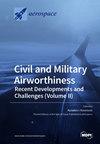Design and Analysis of Low-Gravity Simulation Scheme for Mars Ascent Vehicle
IF 2.1
3区 工程技术
Q2 ENGINEERING, AEROSPACE
引用次数: 0
Abstract
The sample carried back by the Mars Ascent Vehicle (MAV) is a potential flagship mission of deep space exploration in recent years. A low-gravity simulation experiment is an effective method and a necessary stage for verifying the performance of the MAV launch dynamic in Earth’s gravity. In this paper, the uniqueness of low-gravity simulation is illustrated by the classical pulley balance method for the high dynamic process of a test model of the MAV. Its movement direction is the same as the compensation force, which leads to the relaxation of the sling and the failure of the compensation force in traditional cable suspension. Here, three cable suspension schemes including an improved pulley balancing scheme based on a coordinate transformation scheme and based on a dynamic pulley group scheme are proposed. For the actual launch condition of the MAV, the motion state of the ascent under the schemes and the real Mars launch are compared, which proves the feasibility of the schemes. Among them, the improved pulley balancing scheme has the best gravity compensation effect, and the error between the average value and the required value is the smallest, only 1%.火星上升飞行器低重力模拟方案的设计与分析
火星上升飞行器(MAV)携带的样品是近年来深空探测的潜在旗舰任务。低重力模拟实验是验证火星飞行器在地球重力下发射动力性能的有效方法和必经阶段。本文采用经典的滑轮平衡法对无人飞行器试验模型的高动态过程进行了低重力仿真,说明了低重力仿真的独特性。在传统的缆索悬挂中,其运动方向与补偿力相同,这就导致了吊索的松弛和补偿力的失效。本文提出了三种缆索悬挂方案,包括基于坐标变换方案的改进滑轮平衡方案和基于动态滑轮组方案的缆索悬挂方案。针对无人飞行器的实际发射情况,比较了各方案下的上升运动状态和火星实际发射情况,证明了方案的可行性。其中,改进的滑轮平衡方案重力补偿效果最好,平均值与要求值的误差最小,仅为 1%。
本文章由计算机程序翻译,如有差异,请以英文原文为准。
求助全文
约1分钟内获得全文
求助全文
来源期刊

Aerospace
ENGINEERING, AEROSPACE-
CiteScore
3.40
自引率
23.10%
发文量
661
审稿时长
6 weeks
期刊介绍:
Aerospace is a multidisciplinary science inviting submissions on, but not limited to, the following subject areas: aerodynamics computational fluid dynamics fluid-structure interaction flight mechanics plasmas research instrumentation test facilities environment material science structural analysis thermophysics and heat transfer thermal-structure interaction aeroacoustics optics electromagnetism and radar propulsion power generation and conversion fuels and propellants combustion multidisciplinary design optimization software engineering data analysis signal and image processing artificial intelligence aerospace vehicles'' operation, control and maintenance risk and reliability human factors human-automation interaction airline operations and management air traffic management airport design meteorology space exploration multi-physics interaction.
 求助内容:
求助内容: 应助结果提醒方式:
应助结果提醒方式:


